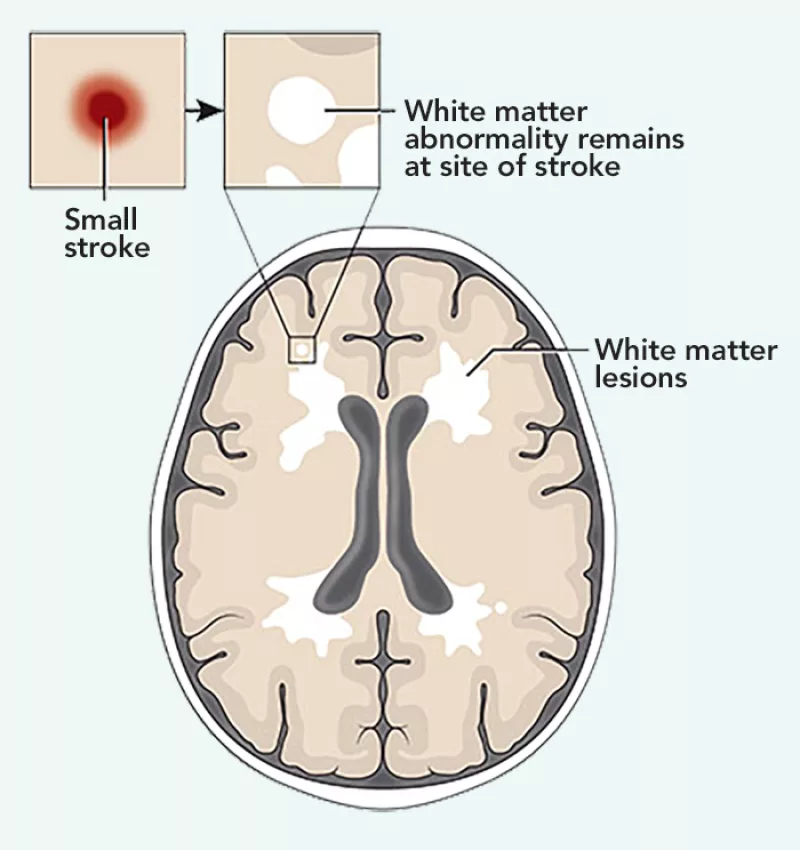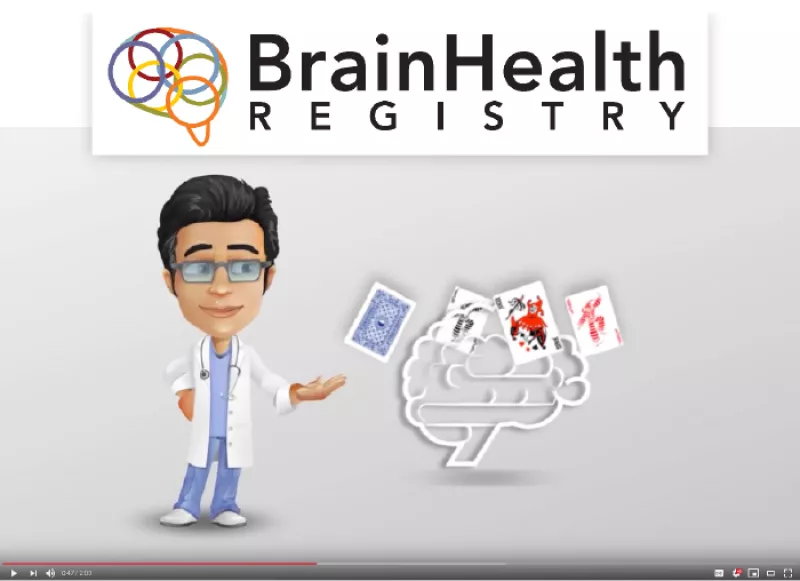Sharp as a tack? What may sustain your brain

absolut - stock.adobe.com.
Can’t think of the right word? Can’t find your glasses? Can’t remember your nephew’s wife’s name? Relax. Memory declines with age. But the risk of dementia snowballs as you get older. Here’s what new studies are testing and what we already know about how to keep your brain in shape.
Brain ABCs
Your brain faces two major threats: the tiny strokes of cerebrovascular disease and the plaques and tangles of Alzheimer’s. And both can start long before you know it.
“Thirty percent of people in their 70s and 40 percent of those in their 80s have elevated amyloid plaques but no symptoms,” says David Knopman, professor of neurology at the Mayo Clinic in Rochester, Minnesota.1
Ditto for tiny infarcts—brain cells that have died from lack of oxygen after tiny blood vessels ruptured or became blocked. “Brain scans show vascular disease in 15 percent of people by age 70 and in 70 percent of people by age 90,” says Knopman. 2
That’s in people with no memory loss. Roughly half of people with memory loss have both types of damage.
And one threat can alter the impact of the other.
“Vascular factors do not affect plaques and tangles, the primary pathologies of Alzheimer’s disease,” says Knopman. “But the less vascular burden you have, the more Alzheimer’s burden you can tolerate.”
“That means that the onset of cognitive impairment due purely to plaques and tangles can be delayed. That’s a really important point.”
Luckily, you can protect the blood vessels in your brain and elsewhere at the same time. And the earlier you start, the better.
“Beginning in early adulthood, freedom from cardiovascular risk factors—diabetes, hypertension, high cholesterol, obesity, lack of exercise, smoking, eating an unhealthy diet—should have benefits later in life,” says Knopman.
“The American Heart Association calls them Life’s Simple 7, and it’s a scientifically validated story.”3
That’s the take-home message. Here’s the latest from recent or ongoing studies.

The FINGER Trial
In 2015, FINGER (the Finnish Geriatric Intervention Study to Prevent Cognitive Impairment and Disability) made a splash. 4
“The trial was conducted to test whether moving people toward a healthier lifestyle might in fact be medicine,” says Laura Baker, associate professor of gerontology and geriatric medicine at the Wake Forest School of Medicine.
Medicine to protect the brain, that is.
“FINGER looked at roughly 1,200 people aged 60 to 77 who had no cognitive problems but were at increased risk for cognitive decline,” says Baker. All scored average or slightly below average on memory tests and had risk factors like high blood pressure, high cholesterol, or obesity.
“The researchers wanted to test a combination of a healthier diet, exercise, getting people engaged with their community, cognitive stimulation, and watching their medical numbers—their blood pressure, lipids, blood sugar,” explains Baker.
The participants were randomly assigned to receive either standard health advice or a lifestyle intervention including diet and exercise sessions with nutritionists and physiotherapists, cognitive training with psychologists and computer programs, medical checkups, and social activities.
“People who are lonely and isolated don’t do well,” notes Baker.
The results: “After two years, the people who received this hefty lifestyle intervention had better cognitive function than the people who got just the basic health information.” (Their overall score on a battery of tests was 25 percent higher.)
“It’s phenomenal that you can improve the health of your brain by repairing the health of your body,” says Baker.
The POINTER Trial
FINGER was just the beginning.
“The Alzheimer’s Association, working with the Finnish FINGER group, decided to see if other countries could replicate the results and adapt them to their own culture,” says Baker.
In 2017, they announced World Wide FINGERS, a global network of similar trials. Baker is one of four lead investigators in the U.S. trial, called POINTER.
“We’re not just trying to replicate FINGER, but to make it one step better,” she points out.

POINTER is enrolling 2,000 people aged 60 to 79 at five sites—in Chicago, Houston, North Carolina, Northern California, and Rhode Island.
“The participants are all at risk because they have a first-degree family member—a mom, dad, brother, or sister—with a history of a memory problem,” says Baker. “They’re not regular exercisers. And they eat the standard American diet, not a super healthy diet.”
What’s more, “nearly all have a mild medical issue like borderline high blood pressure, LDL cholesterol, or blood sugar.”
Folks like that aren’t hard to find, adds Baker. “Over two-thirds of people in our age range have abnormalities in at least one of those measurements.”
POINTER is different from FINGER in one important way.
“These people all have first-degree family history, and they’re worried,” explains Baker. “So it would be unfair and unethical for us to put some of them in a do-nothing control group when we know that a healthy lifestyle is going to benefit them in some way.”
Instead, POINTER will assign everyone to the same intervention, but one group will be “self-guided” and the other will be “structured.”
“Everybody is assigned to a team of 15 people, and once they’re randomized, they’ll go through the intervention with those 14 other people and a facilitator,” notes Baker.
“We recruit in one neighborhood at a time, so participants can meet in their own neighborhood,” she adds. Then the researchers move on to a new neighborhood to fill a new team.
“We’ll provide the self-guided group with help to design their own lifestyle-change program that best suits their personal needs and schedule,” says Baker.
“We’ll give the structured group programs for exercise and diet, and homework for intellectual challenge and social engagement.”
Both groups will also keep an electronic log of their efforts.
“If we see that Sam hasn’t had an entry for a week and a half, the staff member finds Sam—no matter which group he’s in—and figures out how to help Sam get back on track again,” says Baker.
And unlike FINGER, POINTER will ask participants to do “homework.”
“We want them to get out there,” says Baker. “Get connected to people, volunteer, go to film festivals, do things that challenge their mind.”
Once people retire, that takes effort.

“It’s post-retirement when all of a sudden the challenges come to an abrupt halt,” says Baker. “Passive entertainment like sitting in front of a TV, hour after hour, isn’t going to challenge you in an intellectual way.”
The answer, she says, is to get out of your comfort zone. “You know something is challenging if it’s hard to do.”
When it comes to exercise, the POINTER trial covers the map—aerobic exercise, resistance training, and stretching.
“It’s the whole-body anti-atrophy plan for our aging bodies,” says Baker.
Results are expected in 2024.
The MIND Trial
What’s the best diet to keep you sharp?
The MIND (Mediterranean-DASH Diet Intervention for Neurodegenerative Delay) trial is trying to find out.
“In observational studies that follow large cohorts of people, a DASH-type diet or a Mediterranean diet predicted less cognitive decline with aging and less dementia over time,” says Frank Sacks, professor of cardiovascular disease prevention at the Harvard T.H. Chan School of Public Health.
Could something else about people who eat those healthy diets explain why their brains are less likely to go downhill?
“Absolutely,” says Sacks.
“No matter how well you control for other factors in those studies, you can’t be totally sure. You still need to do clinical trials, if possible.”
Enter the MIND trial, which enrolled about 600 people living in Boston or Chicago. All were overweight or obese and were eating not-so-healthy diets.

“In Boston, we excluded about 60 percent of the people who responded to our ads because their diets were too good,” says Sacks, one of the trial’s investigators.
The participants were randomly assigned to eat either their usual diet or the MIND diet. Both had 250 fewer calories than the participants had been eating.
The MIND diet is essentially a Mediterranean or DASH diet that has been tweaked to include more of some foods—like berries, nuts, extra-virgin olive oil, fish, and leafy greens—that were often consumed by people with less memory loss in observational studies.5
“We’re teaching calorie control to both groups, and they like being in the study because they learn so much about diet,” says Sacks.
A Mediterranean or DASH diet may help maintain your brain the same way that it can protect your heart.
“In vascular dementia, you have blockages in the tiny arteries in the brain that are similar to the blockages in the cardiac arteries that give you angina,” says Sacks. “Alzheimer’s is different, but it can co-exist with vascular dementia.”
So stay tuned. “We’ve been doing the study for about two years,” says Sacks. “We’ve got a year and a half or so to go.”
DASH Diet
A DASH diet keeps a lid on blood pressure, which may protect your brain’s blood vessels. Here’s a 2,100-calorie version. A Mediterranean diet is similar, but you’d use the “Wild Card” for olive oil. (Note: Some serving sizes are quite small.) 
SPRINT MIND
It’s no surprise that high blood pressure can shrink brain power as you age.
“Almost every study has shown that midlife hypertension is associated with worse cognitive outcomes in later life,” says the Mayo Clinic’s David Knopman.
The latest: When he and colleagues tracked roughly 4,760 participants in the Atherosclerosis Risk in Communities (ARIC) study for 24 years, those with high blood pressure both in midlife and late life had a 49 percent higher risk of dementia than those whose blood pressure stayed normal.6
In contrast, the risk of dementia wasn’t elevated for those whose blood pressure rose only later in life. (Of course, high blood pressure at any age is a danger because it can boost the risk of a stroke or heart attack.)
“Hypertension in midlife may simply be more potent because it implies a longer duration of exposure to whatever is deleterious to the brain or its blood vessels,” says Knopman.
More evidence that high blood pressure harms the brain: the SPRINT MIND study.
The SPRINT trial randomly assigned roughly 9,360 people with hypertension to take drugs to get their systolic blood pressure—that’s the higher number—below either 140 or 120.7 (The trial was cut short after three years as soon as the researchers saw that the 120 group had a lower risk of strokes, heart attacks, and death.)
The SPRINT MIND study did brain scans on 449 of the SPRINT participants. Those aiming for 120 had fewer white matter lesions than those aiming for 140.8 (The brain’s white matter contains bundles of nerve fibers.)
“I find the results compelling,” says Knopman. “There’s no question that hypertension is the strongest risk factor for white matter lesions. So those changes in white matter are consistent with what you’d expect.”
However, the 120 group also lost slightly more brain volume.
“Those results conceivably could indicate a problem,” says Knopman. “But it’s possible that less brain volume is a reflection of less swelling due to fewer lesions,” he speculates. “That would be favorable.”
In an earlier SPRINT MIND analysis, researchers reported that the 120 group had a 19 percent lower risk of mild cognitive impairment, which can lead to dementia.9 (The risk of dementia was not significantly lower, possibly because the researchers only tracked people for two years after the trial ended.)
Knopman’s bottom line: “The results are really positive news that controlling blood pressure has a benefit for cognitive outcomes.”
The ACHIEVE Trial
“Two-thirds of adults older than 70 have a clinically significant hearing loss,” says Jennifer Deal, assistant professor of epidemiology at the Johns Hopkins Bloomberg School of Public Health.
And people with hearing loss are twice as likely to be diagnosed with dementia.10
How might hearing loss harm memory? Scientists have suggested three possibilities:
- Cognitive load. “When sound comes in, it’s encoded into a neural signal in the inner ear,” explains Deal. “That signal is sent to the brain, where it’s decoded.”

But if the inner ear is damaged, it doesn’t encode the signal as well.
“So instead of being a clear signal, it’s a garbled signal,” says Deal. “It’s not an audibility issue so much as a clarity issue.” It sounds like people are mumbling.
“When that garbled signal goes to the brain,” adds Deal, “the brain has to work harder to decode it. And that comes at the expense of doing other things, like encoding a signal into a memory.”
- Brain atrophy. “People with hearing loss have faster rates of atrophy, particularly in the temporal lobe of the brain, than people without it,” explains Deal. If hearing loss causes that withering, treating it could protect the brain.
- Social isolation. “When people have difficulty hearing in noisy situations, they may avoid those situations,” says Deal. “So they may go out less, be less involved in the community and in other areas.” And isolated people have a higher risk of memory loss.
But whatever causes hearing loss may also cause memory loss.
So the question, says Deal, is “can we prevent cognitive decline by treating hearing loss?” That’s what the ACHIEVE (Aging and Cognitive Health Evaluation in Elders) trial aims to find out.11
“We’ve enrolled nearly 1,000 people,” says Deal. All are aged 70 to 84 and have mild-to-moderate hearing loss. They’ll be randomly assigned to one-on-one sessions to get a hearing aid or to learn about lowering their risk of disease.
Results are due in 2022. Until then, if you have trouble hearing, try a hearing aid or a personal sound amplification product, or PSAP.
“Many people consider hearing loss to be part of normal aging, but it’s not,” says Deal. Even if treating hearing loss doesn’t protect the brain, “it has the potential to have a huge impact on somebody’s life.”
Want to help?

Want to help scientists learn more about how the brain ages? Consider joining the Brain Health Registry, an observational study by researchers at the University of California, San Francisco.
They’re looking for anyone aged 18 or older who is willing to play online brain games every three to six months. The goal is to track the performance of thousands of people over time.
To learn more, go to brainhealthregistry.org. And go to clinicaltrials.gov to join other studies.
TO PROTECT YOUR BRAIN
There’s a good chance that these steps will protect your brain...and your health.
- Control your blood pressure
- Keep a lid on blood sugar
- Don’t smoke
- Control your LDL cholesterol
- Lose (or don’t gain) excess weight
- Exercise 30 minutes a day
- Eat a healthy diet (see “DASH Diet”)
- Stay mentally and socially active
- Get enough sleep
- Get your hearing checked
DON’T EXPECT MUCH FROM
These supplements have failed to help or haven’t been well tested.
- Multivitamins
- Vitamins C and E and beta-carotene
- DHA
- Ginkgo
- Prevagen
- Vinpocetine
FOR MORE INFORMATION
- Alzheimer’s Association (alz.org)
- National Institute on Aging (nia.nih.gov)
1JAMA Neurol. 75: 970, 2018.
2Biochim. Biophys. Acta 1862: 952, 2016.
3Stroke 48: e284, 2017.
4Lancet 385: 2255, 2015.
5Alzheimers Dement. 11: 1015, 2015.
6JAMA 322: 535, 2019.
7N. Engl. J. Med. 373: 2103, 2015.
8JAMA 322: 524, 2019.
9JAMA 321: 553, 2019.
10Lancet 390: 2673, 2017.
11Alzheimers Dement. 4: 499, 2018.
Photos (top to bottom): absolut/stock.adobe.com, National Institutes of Health, National Institutes of Health, moodboard/stock.adobe.com, Igor Normann/stock.adobe.com, Sound World Solutions, Igor Normann/stock.adobe.com (berry), fotolia.com—© Scott Harms (cereal), © angelo.gi (yogurt), © Krzysiek z Poczty (nuts), © cultureworx (salmon), © Paylessimages (oil), © pockygallery11 (sugar).

